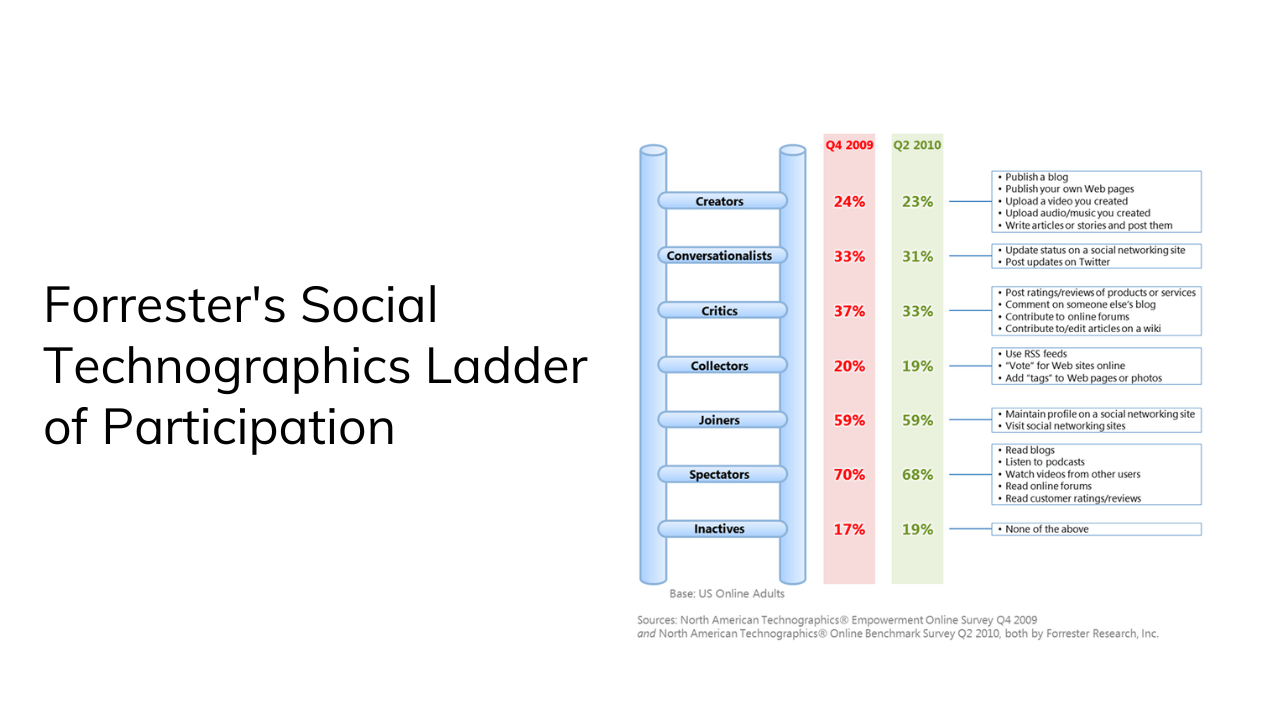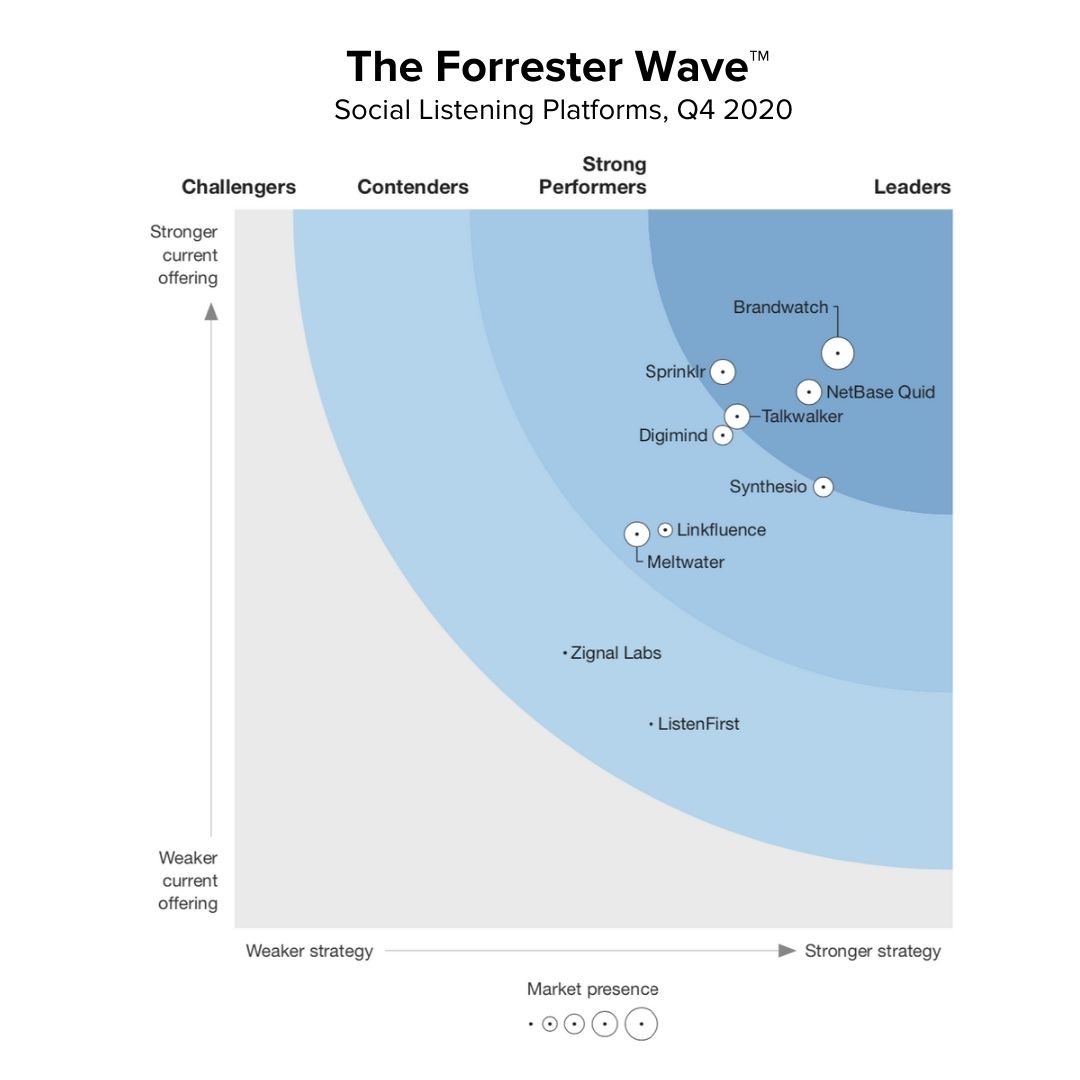The Forrester Wave Social Listening Report offers valuable insights for brands investing in enterprise-level social software. Forrester, a research and advisory firm akin to Gartner and IDC, guides buyers to make informed decisions when selecting enterprise software. The Gartner Magic Quadrant Social Listening is an equivalent study that no longer exists.
Who is Forrester Research?
Forrester Research was founded in 1983 by George F. Colony and headquartered in Cambridge, Massachusetts. They have established themselves as trusted source for helping companies make more intelligent decisions when purchasing technology.
Forrester has always focused on providing data-driven research and analysis on technology’s impact on businesses and consumers. As the marketing landscape has evolved, Forrester’s research has played a role in helping marketers adapt to these industry changes.
Forrester’s research includes several insights for brands and marketers, including customer experience, consumer intelligence, digital marketing, and marketing automation. These reports go deep with the latest trends, tools, and best practices. For example, the Forrester Wave™ reports evaluate and compare the top technology vendors in a particular market, allowing marketers to make informed decisions when selecting tools and platforms.
The Forrester Social Technographics Ladder of Participation
Forrester Technographics was developed in the late 1990s. This model was designed to help marketers understand how their customers used social media and their attitudes and behaviors toward the technology.

The Forrester Technographics model is built upon research and surveys, which collect information on consumers’ adoption of and attitudes toward digital technologies. This data is then segmented into distinct groups to help identify patterns and preferences among consumer segments.
There are several critical dimensions to the Social Technographics model:
- Technology Ownership: This dimension examines the types of devices and technologies that consumers possess, such as smartphones, computers, tablets, and wearables.
- Technology Usage: This model focuses on how consumers utilize technology in their daily lives, including the frequency and duration of use, the activities they engage in, and the platforms they prefer.
- Attitudes Toward Technology: The Technographics model also considers consumers’ attitudes and sentiments toward technology, ranging from early adopters who eagerly embrace innovations to late adopters who are more cautious or resistant to change.
- Demographics and Psychographics: The Technographics model incorporates demographic and psychographic information, such as age, gender, income, and lifestyle preferences.
The Forrester Wave: Social Listening Platforms, Q4 2020
Enterprise Social Listening Platforms have emerged as crucial tools for companies. The Forrester Wave social listening report sheds light on the growing significance of the industry and helps marketers make more informed decisions when selecting the right tech for their needs.
Enterprise Social Listening enables companies to monitor, analyze, and respond to conversations happening across social media channels. The Forrester social listening report highlights key factors for evaluating the performance of these SaaS platforms, such as data quality, analytical capabilities, and user experience. Also, the report emphasizes the importance of integrating insights with other data sources, ensuring that brands derive maximum value from their investment in these tools.
The Forrester Wave social listening report is a valuable resource for companies seeking to optimize their social media strategies. By leveraging the insights provided, buyers can select the ideal platform to navigate the ever-evolving
Forrester’s Key Findings
Forrester examined 12 leading enterprise social listening platforms, considering 33 distinct criteria. These criteria fell under three broad categories: current offering, strategy, and market presence, providing a comprehensive understanding of each platform’s strengths and weaknesses.
The enterprise social listening space has matured, displaying more parity than in previous years. As a result, the functionality has significantly improved, and pricing has become increasingly competitive.
Three critical criteria were identified as vital for enterprise social listening: data management, analytics, and integrations. Data management allows for collecting and storing vast amounts of data, while analytics tools enable extracting valuable insights from the gathered data. Integrations connect the platform with other essential tools companies, PR pros, and brands utilize.
The Forrester Wave also delved into the vendors’ pricing models, observing a shift from per-user pricing to subscription-based models.
Lastly, the report explored the differentiating factors among vendors, pinpointing three primary areas where they distinguish themselves: data management, analytics, and integrations. These differentiators allow brands, PR pros, and companies to identify the most suitable platform that aligns with their unique requirements and objectives.
The Forrester Wave Social Listening Methodology
The Forrester social listening report typically involves four parties: the lead analyst, research assistant, vendor (referred to as the vendor response team by Forrester), and customer references at Forrester. The evaluation process encompasses three distinct data points.

First, a questionnaire containing evaluation criteria is sent to the vendors, who are given a few weeks to respond. Subsequently, direct executive interviews and product demonstrations take place. Finally, customer references are gathered through phone interviews or surveys.
Scoring and reviewing constitute the final part of the report. Analysts assign vendor scores based on specific criteria, weighting them according to their significance. These scores are then utilized to create the Forrester Wave graphic.
In the Forrester Wave Report, several familiar names emerged as Strong Performers and Leaders:
Forrester Wave Social Listening Leaders
- Brandwatch provides advanced analytics and data visualization capacities. Recognized for its comprehensive data coverage, Brandwatch facilitates the collection of essential insights from social media interactions for brands, PR pros, and companies, supporting their ability to remain current and informed.
- Sprinklr provides an all-encompassing, integrated platform that enables users to manage their social media presence, customer service, and advertising initiatives effortlessly. By leveraging automation and AI-powered analytics, Sprinklr enables organizations to refine their social strategies and offer outstanding customer experiences.
- Netbase provides real-time social listening and analytics capabilities and offers critical insights into customer sentiment and brand well-being. Employing advanced natural language processing (NLP) technology, Netbase supports companies in making informed decisions that bolster their brand reputation.
- Talkwalker is a frontrunner in social listening and analytics and presents an intuitive platform with numerous features, such as image recognition and adaptable dashboards. This platform assists brands, PR pros, and companies in tracking their online presence and recognize trends, ensuring continued competitiveness and relevance.
Forrester Wave Social Listening Strong Performers
- Synthesio specializes in offering a worldwide view of social media conversations. Prioritizing data quality, Synthesio presents a robust array of analytics tools that help users grasp their audience’s inclinations and patterns.
- Digimind provides an accessible platform combining social listening with competitive intelligence. Concentrating on generating actionable insights, Digimind assists brands, PR pros, and companies in making well-informed decisions, contributing to efficient social media strategies.
A summary review of social media monitoring tools has been compiled for those interested. Although not exhaustive, the list includes the top players mentioned in the Forrester report.
Enterprise Factors to Consider Before Purchasing
Before diving into the Forrester Wave report, exploring the various factors to consider when purchasing social software is essential. With numerous vendors in the market, each offering subtle distinctions, the following elements can help guide your decision-making process:
- Consider the pricing models offered by vendors. Some charge per user or employ a subscription model based on cost per seat, while others provide a freemium version with limited features.
- Functionality is another crucial aspect – ensuring the platform encompasses features like sentiment analysis, topic/keyword monitoring, and customizable reporting.
- Integration capabilities are vital, as the platform should seamlessly connect with other tools, such as CRM or social media management software.
- User experience is key; the platform should be easy to navigate, boasting a clean interface and comprehensive documentation.
- Reliable customer support should be available to address any issues encountered.
- Data limitations should also be considered, as some platforms restrict the volume of data that can be collected, which could pose a problem for monitoring numerous keywords or social media accounts.
Finally, ensure the platform enables data export for analysis or use in other tools.
